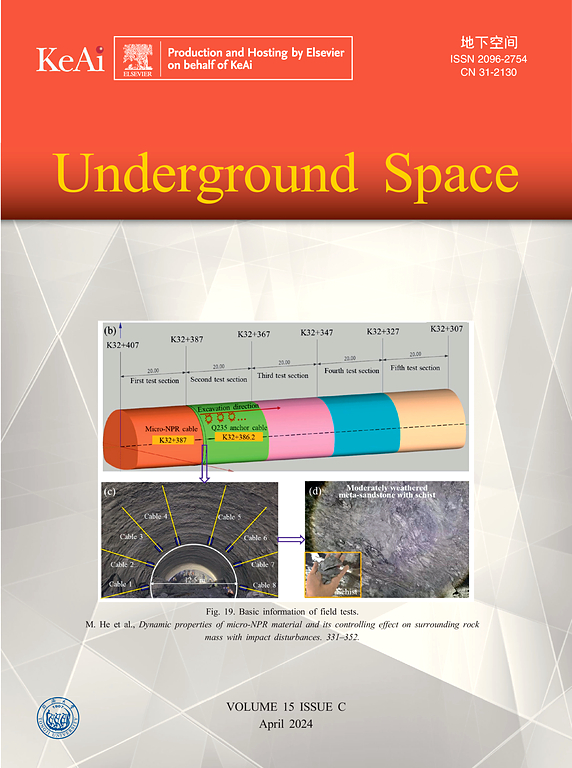层间岩体开挖隧道纵向优化的TIM-FEM-ML综合技术
IF 8.3
1区 工程技术
Q1 ENGINEERING, CIVIL
引用次数: 0
摘要
地下工程对象的布置对围岩的稳定性和施工安全有着重要的影响。尽管在设计优化和安全评估方面朝着智能化和信息化的方向发展,但基于力学分析的工程计算仍然面临一定的障碍。因此,本文提出了一个综合隧道信息建模(TIM)、有限元法(FEM)和机器学习(ML)技术的框架来优化隧道纵向方向。它还深入探讨了解决与每种技术相关的挑战的细节。该框架包括三个阶段:基于TIM的参数化建模、基于FEM的自动数值模拟和利用ML的智能优化。首先,在TIM平台上构建地质构造和工程构造的几何模型。随后,通过建议的转换接口促进数据转换。编写Python代码实现数值模拟的自动处理,并将结果提取到ML算法中用于预测模型。在数值流文件中植入了一种优化算法,以获取隧道轴线与岩石走向的最佳相对交角。通过一个案例研究来评估所提出的框架的可行性。结果表明,设计和优化的精度和效率有了很大的提高。该框架对推进地下工程的智能化、信息化具有巨大的潜力。本文章由计算机程序翻译,如有差异,请以英文原文为准。
TIM-FEM-ML synthetic technology for longitudinal optimization of tunnel excavated in the interlayered rock mass
The layout of underground engineering objects significantly influences the stability of the surrounding rock mass and construction safety. Despite advancements toward intellectualization and informatization in design optimization and safety assessments, mechanical analysis-based engineering computations still face certain impediments. Consequently, this paper proposes a comprehensive framework integrating tunnel information modelling (TIM), finite element method (FEM) and machine learning (ML) technology to optimize the tunnel longitudinal orientation. It also delves into the specifics of addressing the challenges associated with each technology. The framework encompasses three phases: parametric modelling based on TIM, automatic numerical simulation based on FEM, and intelligent optimization leveraging ML. Initially, geometric models of the geological formations and engineering structures are constructed on the TIM platform. Subsequently, data conversion is facilitated through the proposed transformation interface. Python codes are programmed to realize automatic processing of numerical simulation and results are extracted to the ML algorithm for the prediction model. An optimization algorithm is implanted in the numerical stream file to retrieve the optimal relative intersection angle between the tunnel axis and the trend of rocks. A case study is conducted to evaluate the feasibility of the proposed framework. Results demonstrate a substantial improvement in design and optimization accuracy and efficiency. This framework holds immense potential to propel the intellectualization and informatization of underground engineering.
求助全文
通过发布文献求助,成功后即可免费获取论文全文。
去求助
来源期刊

Underground Space
ENGINEERING, CIVIL-
CiteScore
10.20
自引率
14.10%
发文量
71
审稿时长
63 days
期刊介绍:
Underground Space is an open access international journal without article processing charges (APC) committed to serving as a scientific forum for researchers and practitioners in the field of underground engineering. The journal welcomes manuscripts that deal with original theories, methods, technologies, and important applications throughout the life-cycle of underground projects, including planning, design, operation and maintenance, disaster prevention, and demolition. The journal is particularly interested in manuscripts related to the latest development of smart underground engineering from the perspectives of resilience, resources saving, environmental friendliness, humanity, and artificial intelligence. The manuscripts are expected to have significant innovation and potential impact in the field of underground engineering, and should have clear association with or application in underground projects.
 求助内容:
求助内容: 应助结果提醒方式:
应助结果提醒方式:


